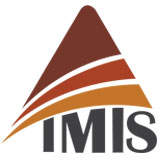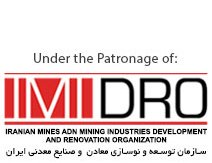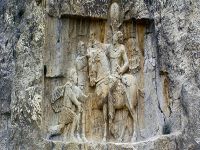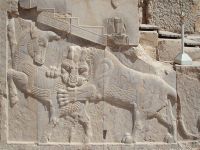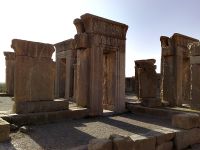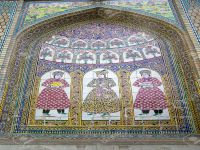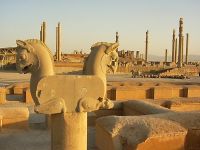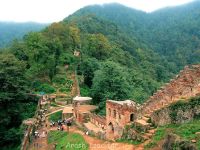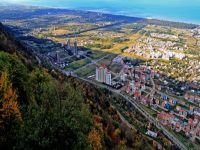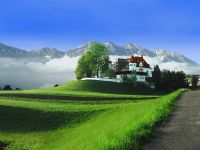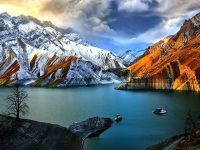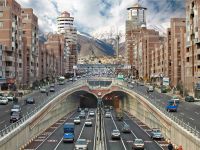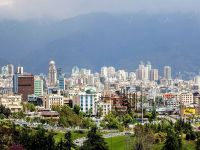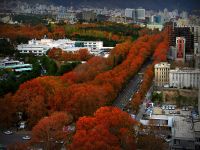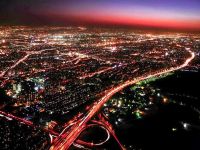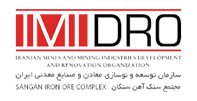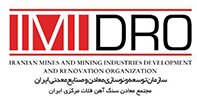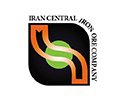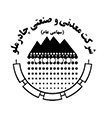HISTORICAL BACKGROUND OF IRAN
GEOGRAPHY OF IRAN
POPULATION
CLIMATE
CLOTHING
LANGUAGE
WORKING HOURS
LOCAL TIME
CURRENCY AND EXCHANGE RATE
ELECTRIC CURRENT
FLIGHTS TO AND FROM TEHRAN
VISAS
IRAN CULTURAL, NATURAL AND HISTORICAL ATTRACTIONS
MEDICAL FACILITIES AND SERVICES
VARIOUS FACILITIES AND SERVICES
Historical Background of Iran
The history of population settlement in Iran dates back to the earliest periods of world civilization, although the period before the arrival of the Aryans has few records. The Plateau of Iran is the cradle of human civilization.In the late 4th and early 3rd millennia BC, Elamite civilization rose on the lowlands of the south-west Iran. By the late 2nd millennia BC, the Iranians began to settle in the plateau. In the mid-9th century BC, two major groups of Iranians rose to be the dominant forces on the plateau: the Medes and the Persians. In 550 BC, Cyrus of Persians defeated the Medes and founded the Achaemenid Kingdom. The Parthian and the Sassanid dynasties ruled Iran successively.
By 652 AD, the Sassanid were defeated by the Muslim armies and the Iranians converted to Islam. The major Muslim dynasties like Saffaries, Samanids, Buydis, ruled Iran until 1216 and the Mongols invasion that obliterated many Iranian cities. However, during the Safavid period (1501-1736), Iran regained its power and made great progress. They were followed by Afsharids and Zands in the 18th century, the Qajars in the 19th century and the Pahlavis in the 20th century. The uprising of the people in 1978, led to the Islamic Revolution and the establishment of the Islamic Republic of Iran in 1979.
TEHRAN: is located in the north central part of Iran. The village of Tehran is believed to have been a suburb of Rey in the 4th century. After the fall of Rey and the Mongols invasion, many of the inhabitants who escaped the massacre took refuge in Tehran. The first European to mention Tehran was Don Ruy Gonzales de Clavijo, ambassador of the king of Castile to the court of Timur (Tamerlane), who visited the town in 1404.
The importance of Tehran which was famous for its splendid gardens, increased in the Safavids era, as a result of which 114 (the number of the chapters of Quran) towers were built around it. In 1788 Agha Mohammad Khan, the founder of the Qajar dynasty chose Tehran as the capital city of Iran. The town's first boom was in the mid 19th century when a ditch was dug around the city to repel attacks on it; twelve gates were built as the points of approach to the city.
Today, Tehran which covers an area of 1500 sq. km, on the southern slopes of Alborz Mountains, is the most populated city (over 12 million), and the center of political, economical, cultural, and social activities of the Islamic Republic of Iran.
Geography of Iran
The Islamic Republic of Iran covers 1.648.000 sq. km and is situated in south – west Asia and borders the three CIS states, the Republic of Armenia, the Republic of Azerbaijan, and the Republic of Turkmenistan, as well as the Caspian Sea to the north, Turkey and Iraq to the west, the Persian Gulf and the Sea of Oman to the south and Pakistan and Afghanistan to the east. A series of massive, heavily eroded mountain ranges surround Iran's high interior basin. Most of the country is above 1,500 feet, one-sixth of it over 6,500 feet high. In sharp contrast are the coastal regions outside the mountain ring. In the north, the 400 – mile strip along the Caspian Sea, never more than 70 miles wide and frequently narrowing to 10 miles, falls sharply from the 10,000 – feet summit to 90 feet below sea level. In the south, the land drops away from a 2,000 feet plateau, backed by a rugged escarpment three times as high, to meet the Persian Gulf and the Sea of Oman.
The Zagros range stretches from the border with Republic of Armenia in the north-west to the Persian Gulf, and then eastward into Baluchistan. As it moves southward, it broadens into a 125-mile-wide band of parallel, alternating mountains lying between the plains of Mesopotamia and, great central plateau of Iran. The Alborz mountain range, narrower than the Zagros but equally forbidding, runs along the southern shore of the Caspian to meet the border ranges of Khorassan to the east. The highest to its volcanic peaks is 5671 meter snow – covered Mt. Damavand.
On the border of Afghanistan, the mountains fall away, to be replaced by barren sand dunes. The largest rivers in Iran are Karun (890 km & navigable), Sefidrood (765 km) and Karkheh (755 km).
Population
According to the latest estimates, the population stands close to 77 million. Considering the distribution of age groups, the population is relatively young that nearly 23% are under 15 years of age. The population growth rate is slightly more than 1.04% and life expectancy is 72.1 years for males and 74.6 years for females.
Climate
One of the pleasant aspects of the climate of Iran, in comparison with the majority of countries in the Middle East is its variations. These variations are not only geographical but also seasonal. The climate ranges from subtropical to sub polar. In winter a high-pressure belt, centered in Siberia, slashes west and south to the interior of the Iranian Plateau, and low pressures develop over the warm waters of the Caspian Sea, the Persian Gulf, and the Mediterranean Sea. In summer one of the world's lowest pressure centers prevails in the south. Low pressure generates two regular wind patterns: the Shomal, which blows from February to October northwesterly through the Tigris-Euphrates Valley, and the 120-day summer wind, which can reach velocities of 70 miles per hour in the Sistan region at the south-east. Warm Arabian winds bring heavy moisture from the Persian Gulf. Altitude, latitude, maritime influences, seasonal winds and proximity to mountain ranges or deserts play a significant role in the fluctuation of temperature, which varies from a high of 55 Celsius to a low of -37 Celsius. Broadly speaking, the further to the south, the warmer and drier it becomes.
Clothing
Ladies must wear a head – scarf and a long coat or a manteau.
Language
The official language of the Islamic Republic of Iran is Farsi (Persian), a branch of the Indo-Iranian sub-family of the Indo-European languages. It is the language of public education. Other major language groups are Azari, Kurdish, Arabic and Baluchi.
Working Hours
The working hours for the Administration:
From Saturday to Wednesday: 08:00 a.m. to 04:00 p.m.
Local Time
The local time in the Islamic Republic of Iran is: GMT + 3.30.
Currency and Exchange Rate
The currency unit is Rial. 10 Rials equal to one Toman.
$1 USD=35100 Rials, €1 Euro=38670 Rials.
(Rate of November 4, 2015)
Major currencies can be exchanged at the Hotel's Cashier Desk and most Exchange companies.
Please Note: International Credit Cards are not acceptable in Iran.
Electric Current
The electric current power supply is 220 volts.
Flight to and From Tehran
Large number of international airlines fly directly to different cities of Iran. You can travel to Iran by these airlines:

| Iran Air | Turkish Airline | Iran Air Tour | ATRAK | Air China |
| Lufthansa | British Airways | Caspian | Meraj | Iraqi Airways |
| Qatar Airways | KLM | Taban | Belavia | Air Arabia |
| Emirate Airlines | JAL | Kish Air | Pegasus | Gulf Air |
| Mahan | Aseman Airline | Qeshm Air | Ukraine | Fly Baghdad |
| Austrian Airline | ATA | Zagros Airline | Atlas Global | Air France |
| AeroFlot | Air Asia | Germanwings | Etihad Airways | Saudi Airlines |
Most of these flights are to/from Imam Khomeini International Airport (IKA) in Tehran.
Visas
Certain member countries need entry visas to Iran. They should liaise with the Iranian diplomatic missions to familiarize themselves with visa formalities. As for countries where Iran does not have a diplomatic mission, visas will be issued at the airport.
Iran Cultural, Natural and Historical Attractions
Due to its historical background and sustainable social and Cultural Revolution, has a lot of diverse worth seeing sites that satisfy visitors with different tastes. Every visitor, whatever his/her incentive, may find many spectacular places depending on his/her taste. It should not be forgotten that the best way for the recognition of every country is direct contact with its people.
Iranians are famous for their hospitality, compassion, and generosity. It is easily possible to visit Iranians' homes, being slightly acquainted with them and become familiar with their life style, attitudes, livelihood, and many of their characteristics. Historical monuments, which belong to different periods of human settlement in the plateau of Iran, along with diverse natural, coastal, mountainous, and nomadic landscapes, make a coordinated and attractive combination for every visitor.
The ancient Iranian culture, which is reflected in historical and architectural heritage, has brought about many sites worth seeing. The culture of today's Iran is a perfect aggregate of near and far past of this territory and everybody can satisfy intellectual and aesthetic needs according to his/her taste through visiting this wide and rich country. The existing historical monuments in Persepolis, Passargadae, Susa (Shoosh), Isfahan, Shiraz, Hamadan, Kermanshah, Firooz Abad, Syraf and many other ancient centers of Iranian civilization are incentives enough for visiting this country.
The natural environment of Iran, with more than 2,800 kilometers of coastline and water borders as well as the high mountains of Alborz and Zagross, supplies high recreational and tourism potentials. The shores of the Caspian Sea in the north and the coasts of the Persian Gulf and Sea of Oman in the south are suitable places as recreational resort in summer and winter. The islands of the Persian Gulf, Kish, Qeshm, and Hormoz with suitable shores and beaches as well as pleasant sunshine may be used for vacations even in winters. There are daily and regular flights to this region from several parts of the country as well as suitable accommodation facilities. Moreover, these islands are easily accessible through waterways by different types of ships and boats as well as by airplane.
| Iran Natural Attractions | Iran Cultural Attractions |
| akes and Wetlands | Shiraz |
| Altitudes and Summits | Isfahan |
| Forests, Valleys, Plains and Deserts | Yazd |
| Protected and Wildlife Zones | Kerman |
| Caves | Gilan |
| Gardens and Recreational Places | Hamadan |
| Islands | Tabriz |
| Springs and Spa Centers | Mashhad |
| Waterfalls |
For receiving more detailed information and arranging your sight-seeing tours, you are kindly invited to contact the Conference Secretariat.
Iran Today View
Various Facilities and Services
Banking, postal, fax, e-mail and other services will be made available to the participants at the hotel.



